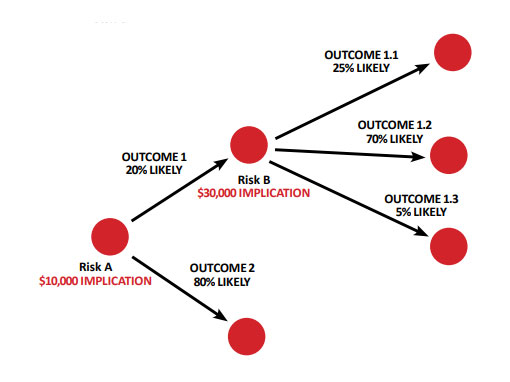
Decision Trees
Decision-making in a crisis is not easy. Things are coming at you at a breakneck pace and everyone seems to need an answer NOW! This is not the time to make decisions by committee. But it may be time to have a team of trusted advisors by your side to share the workload. They can help you brainstorm solutions, explore options and come to consensus on what must be done.
To help the team in the planning and execution of any crisis response strategy, you may want to use decision trees in your training exercises and during an actual crisis. These trees will help you flesh out possible options along with their potential outcomes.
They work like this:
If ‘Risk A’ is selected, what might happen? Well, ‘Outcome 1’ may happen or ‘Outcome 2’. If you choose ‘Outcome 1’, then ‘Outcome 1.1’, ‘Outcome 1.2’ or ‘Outcome 1.3’ might happen. If you were to select ‘Outcome 1.2’, then ‘Outcome 1.2.1’ could happen or ‘1.2.2’ and so forth. Try to take this decision tree out five levels and see what the possibilities are. This can help you arrive at decisions much more quickly since you’ll have a fairly good idea how each one will play out down the road.

Table of Contents
1. Introduction
2. Why You Need to Plan Now!
3. The Four Stages of a Crisis
4. Assessing Impacts
5. Assessing Probabilities
6. Putting It All Together
7. Plotting the Results
8. Rinse & Repeat
9. Developing an Effective Plan
10. Plan Components
11. Crisis Response Modules
12. Decision Trees
13. Resuming Operations
14. Summary
15. Templates & Resources
